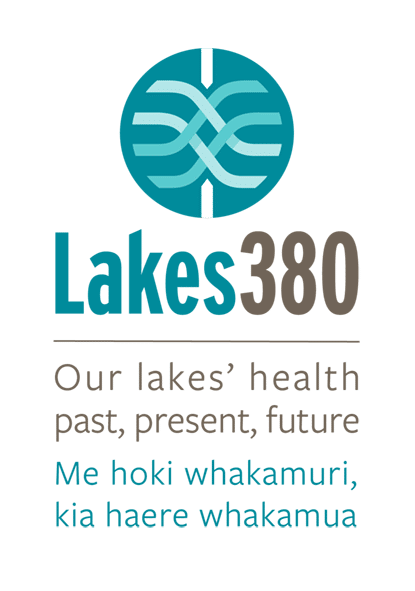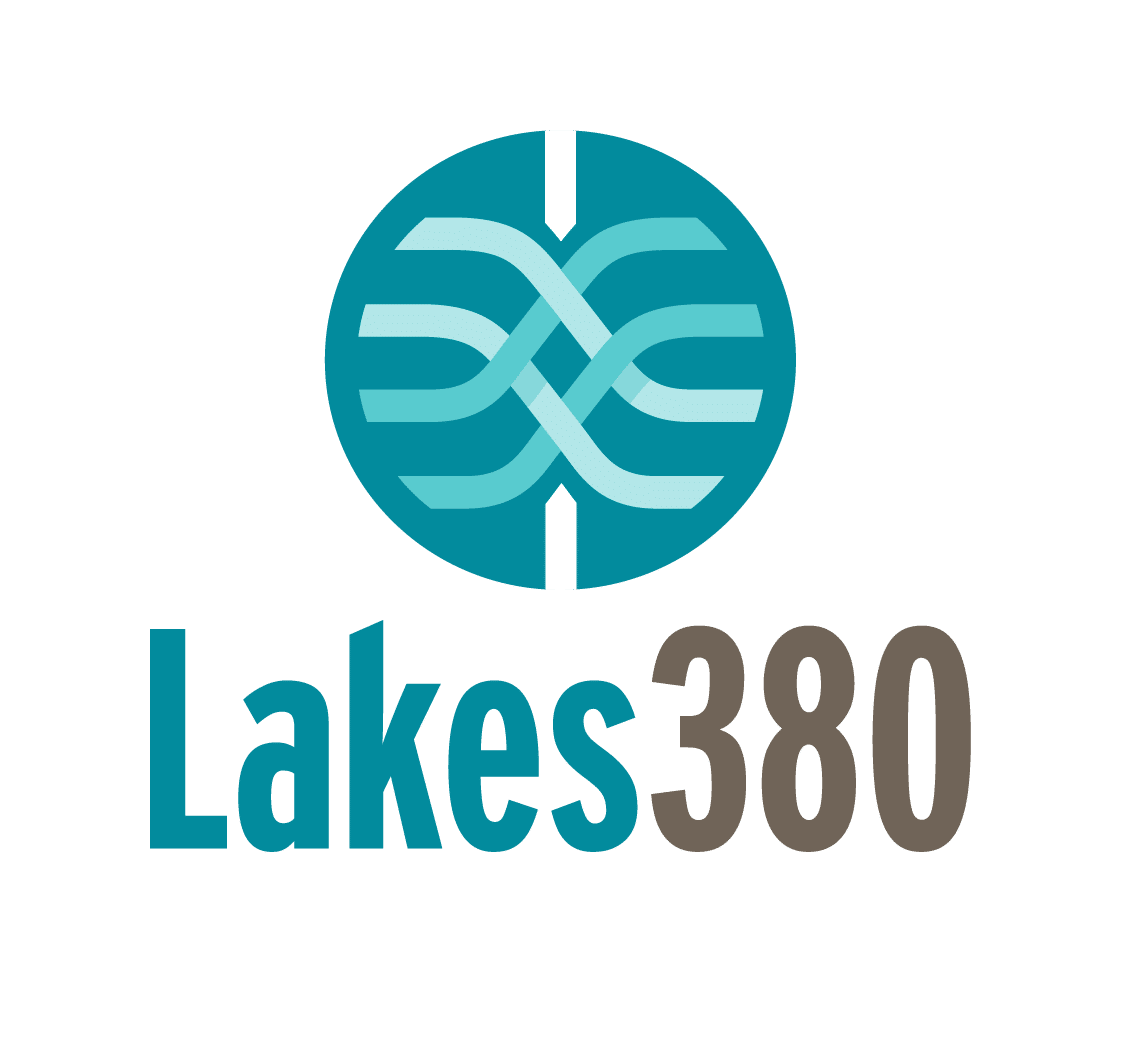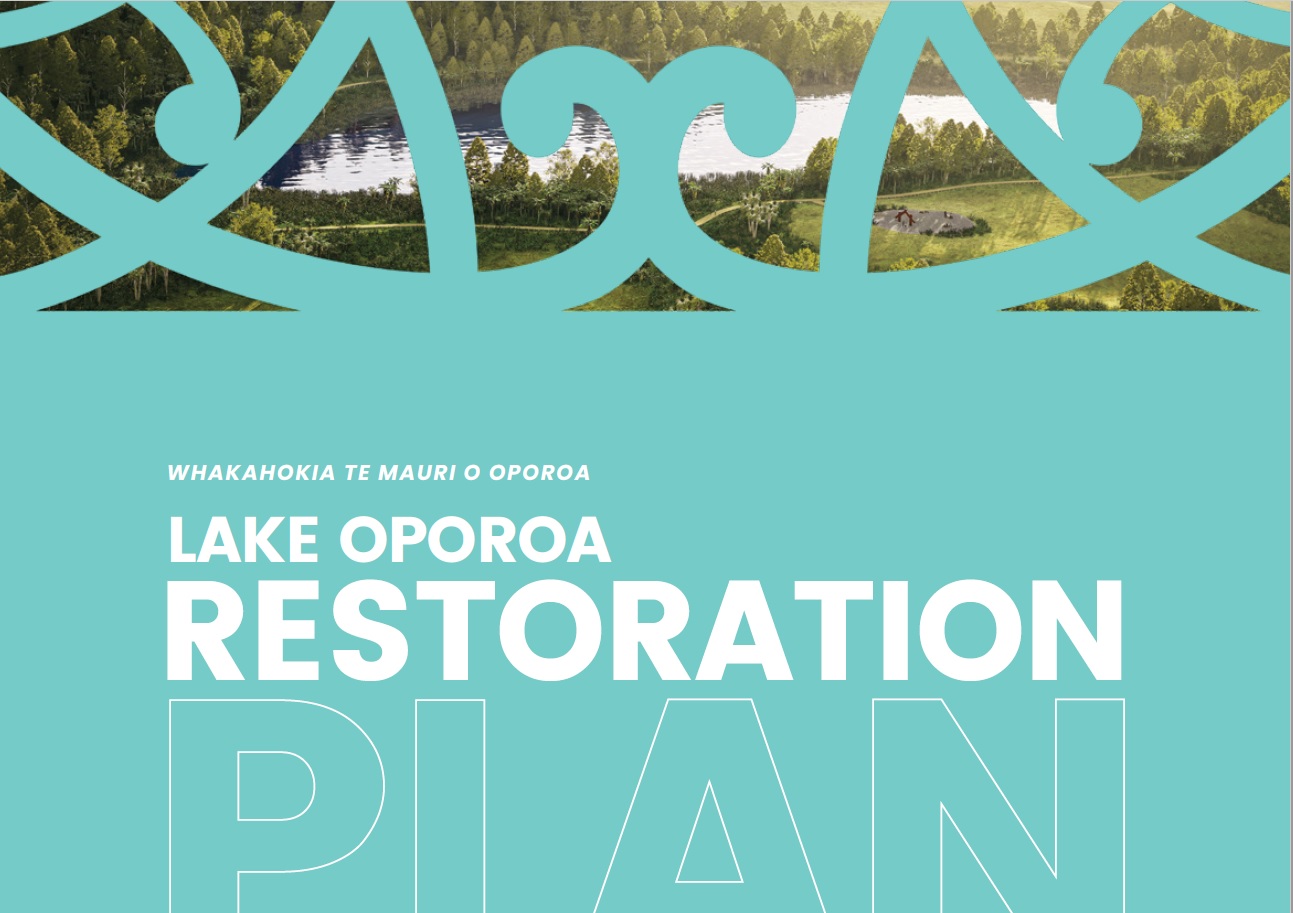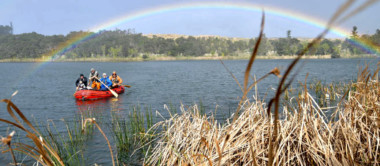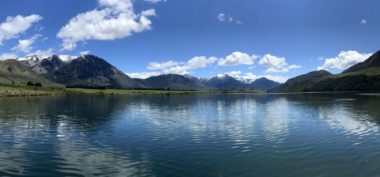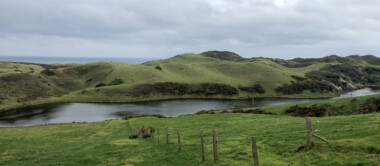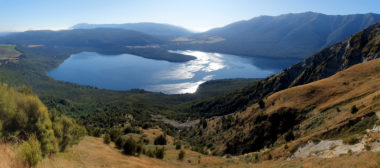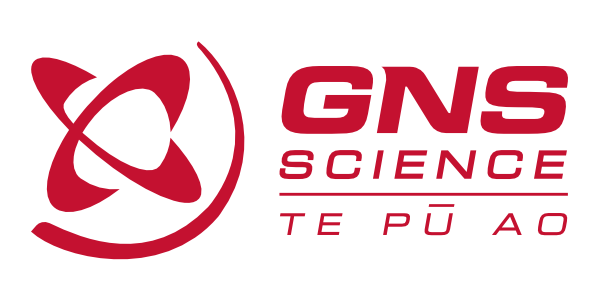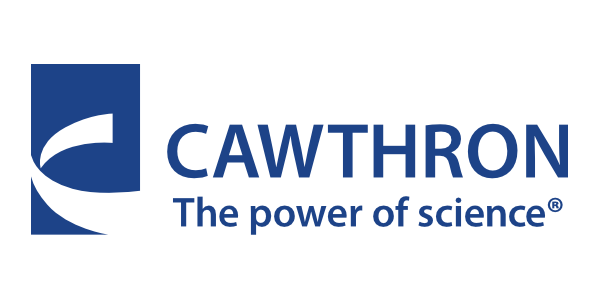Georgia Thomson-Laing (Cawthron)
Standing on the headlands of Cape Young, keeping an eye out for sharks in the clear blue of the ocean waves as they crashed on a white sandy beach at the northern end of Chatham Island with a vista of the rest of the island stretching out beyond, this was not the first time I was amazed by the places I have been lucky enough to visit with the Lakes380 field campaigns. Born and bred on mainland New Zealand, I always knew of the Chatham Islands but never more than a handful of stories. I knew it is famously the first place in the world to see the sun and of course there is the legendary conservation story of Old Blue, the last female Chatham Island robin that was brought back from the brink of extinction. However, this is a woeful amount to know about a special part of NZ, so I did not hesitate for a moment when I was lucky enough to get the opportunity to join the Lakes380 field trip to the Chatham Islands. To me, this sounded like the ideal way to explore my own country and to do so through the lens of lake sampling with an awesome team of people; it was a dream opportunity. In addition to me, the field team consisted of Lakes380 field trip regulars Sean, Marcus, Susie, Riki, Chris and we were joined by Kat Holt from Massey University, an expert in pollen and geology who had previously worked in the Chatham Islands (and had a lot of local knowledge to share!). David and Celeste from Waikato University who had accompanied us on several other Lakes380 field campaigns also joined the team to take drone footage and samples from the lakes we were visiting.

Having been on several field trips before I am used to the sampling routine on the ground and on the lake, but being 800 km east of mainland NZ, the Chatham Islands added a new set of logistical challenges to overcome, the predominant being how to get all our gear and the provisions we needed to the island. So, loaded with multiple chilly bins of fresh food (and of course necessary coffee) from the mainland, we arrived finally on a Tuesday morning, a day later than expected due to a flight cancellation because of low fog. All the field gear had been shipped a month or so earlier and luckily was waiting for us at the docks (I later learnt that it had only arrived on the Saturday before, so good fortune was on our side!). We shifted our clocks 45 minutes ahead (Chatham Island time), settled at our accommodation, inflated boats, sorted gear and we were set to sample some lakes.
There are roughly 28 lakes on Chatham Island. We were lucky enough to sample 10 of them, and they all had their unique beauty and character. In saying this, they were all shallow lakes with the deepest lake reaching six metres much to the slight disappointment of the coring team who ended up doing a large amount of coring with the corer starting halfway out of the water. Lake Marakapia, Tennant’s Lake and Lake Rotoparaoa were a chain of dune lakes on the east coast of the island, nestled within slightly rolling pastureland overlying limestone geology. Many of the lake cores were dotted with tiny shells. All the lakes had a healthy population of black swans (a theme that continued across the island). I think my favourite lake of the trip was Lake Rotoparaoa, a small lake nestled in grass rolling hillocks – we sampled the lake in the late afternoon, racing the sun setting behind the sheep dotted hills.

Lake Huro was south of these, one of the biggest lakes on the island and was adjacent to the township of Te One and the Te One primary school. This provided the perfect knowledge sharing opportunity for Susie and Marcus to engage with the teachers and school children and teach them all about Lakes380 and why we care about mud from the bottom of lakes. I think the children’s highlight was the challenge set (and assisted) by Riki to try lifting the weights on the corer – the corer being a similar height to some of the younger kids!

.We spent a day in the northeast of the island sampling three lakes, Lake Rangitai, Lake Pateriki and Lake Te Wapu. Lake Rangitai was a similar size to Lake Huro; big, shallow and windy and a sandy drive to get out to the edge of the lake. The beautiful white sandy Lake Pateriki was separated from the ocean by only a small strip of sand, a very picturesque image that I was happy to fully indulge in as it was my turn onshore to do some water filtering, sunbathing in waders and wander around the lake edge. Lake Te Wapu was the only lake that we were unable to retrieve cores from due to difficulties in the sediment composition, but as part of the water quality team I happily collected our entire suit of samples despite this!
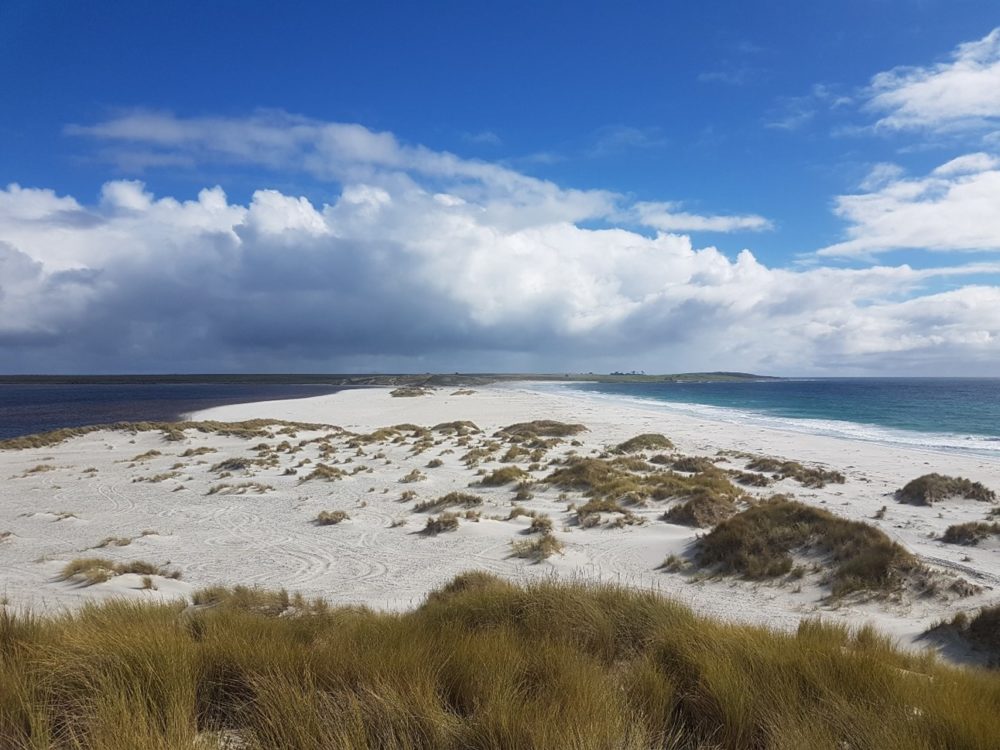
We also explored the northwest, sampling our central ‘alpine’ lake (a whopping 80 m above sea level), Lake Rotoeka on the way to an unnamed lake situated in the shadow of the far west mountain (Matakitaki) out in Waitangi West. Both lakes were peat burn bogs, with dark brown water that was very acidic and less than one metre deep. At Lake Rotoeka, we had our most adventurous 4WDing, getting each truck stuck at least once in the boggy fringes of the lake, hand manoeuvring the trailer out and being inventive with boat transportation on the back of the Ute. Thankfully, the landowner Tom was more sensibly navigating the terrain on a four-wheeler and with a towrope and some perseverance we successfully navigated our way (plus trucks and equipment) in and out of the lake.
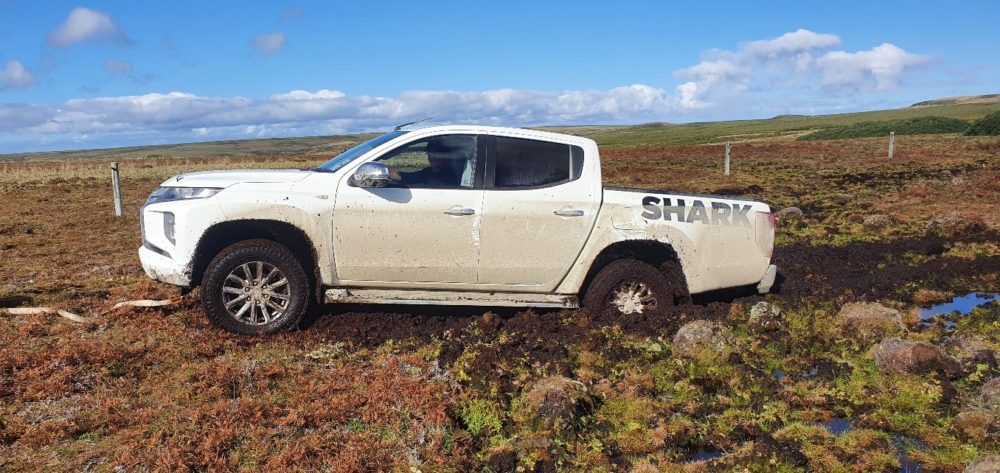

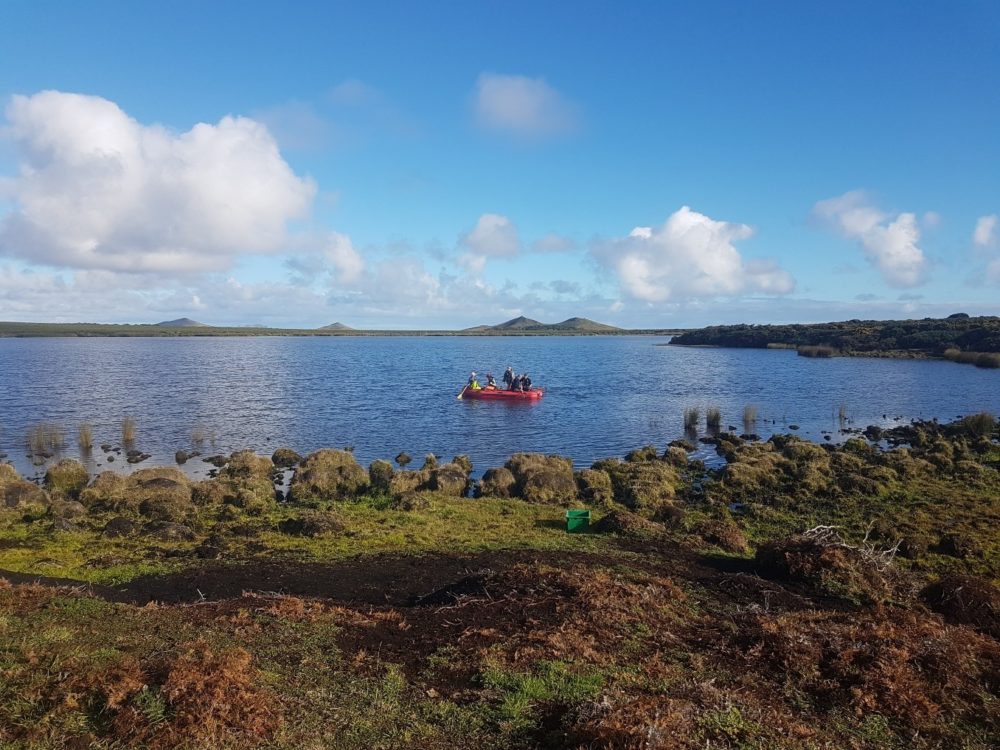
Our sampling campaign ended with Te Whanga lagoon, the very estuarine ‘lake’ that takes up about one third of the entire island. Then we had what must be a Lakes380 field first, a day off; due to doing some longer three-lake days, we were able to spend the last day on the island doing some exploring. We had already made the most of visiting places near the lakes that we had sampled during the week, i.e., searching for fossilised shark teeth on the shores of Te Whanga lagoon, exploring the northeast township of Kaingaroa and visiting the J.M. Barker national historic reserve to see the Moriori tree carvings on the old Kopi trees (known as karaka on the mainland). With our additional day, we were also able to drive the rest of the roads on the island and I think we ended up visiting all four corners of the island by the end of our trip. We drove both the southwest and southeast coasts. We walked in a patch of tree fern dominated bush in the southwest and saw the Chatham Island pīwakawaka, endemic parea (similar to the mainland kererū) and a kākāriki flying in the distance. The southwest took us to Owenga and a colony of Chatham Island shags. We then drove all the way north and ended up in the most beautiful part of the island (in my opinion), the northern coastline. The photo of the view from Cape Young along this coastline speaks for itself.

Out of all the Lakes380 field trips I have been on, it was the trip where I learnt the most, not just about the lakes but about the local environment and especially about the environmental differences between the natural biodiversity of the Chatham Islands in comparison to mainland NZ. In the evenings, conversations spanned a broad range of topics; for example, discussing the unique cultural history of the island, how it was formed from uplift 3 – 4 million years ago, what plants, fish and birds where native to the island, and of course why the Chatham Islands is a hub for great white sharks (rest assured I was not going to do any prolonged ocean swimming in lieu of a stretch of internet research on shark encounters). My memories leaving the island are of an environment of windswept low-lying pastureland dotted with gorse and bracken fern. There was a sparse beauty to the landscape and the everchanging weather with concurrent patches of sun and heavy downpours added to this atmosphere. The slightly rolling hills were only interrupted by occasional cone shaped volcanic hillocks, the highest being around 300 m. Patches of native bush were few and far between but dense where they had been fenced from pests. Cows, sheep, and horses were common across the island as were the ever-present weka, introduced on the island so interestingly considered a pest and frequently hunted. We were caught several times in a bout of sheep herding and had to be careful while driving to navigate the roadside cows. It was a rural setting with only a small number of houses scattered across the farmland with Waitangi in the centre being the biggest gathering of homes. Only a small fraction of the roads were sealed and so our trusty Utes (aptly named Whitie and Shark) were forever covered in dust. Crayfish pots lined the roads and fishing boats were present in the main bays. The coastlines were beautiful, featuring clear blue water, white sandy beaches, and special sunrises and sunsets. The locals were extremely welcoming and friendly, always generous with their time to chat and never missing a wave as you passed them on the road. And of course, the lakes were unique gems nestled within this environment. These are just a few reflections and images I will take with me from the trip. It was an amazing opportunity to get to visit and see the Chatham Islands; a special part of NZ that I have never had the opportunity to explore. Thanks, Lakes380 team!
